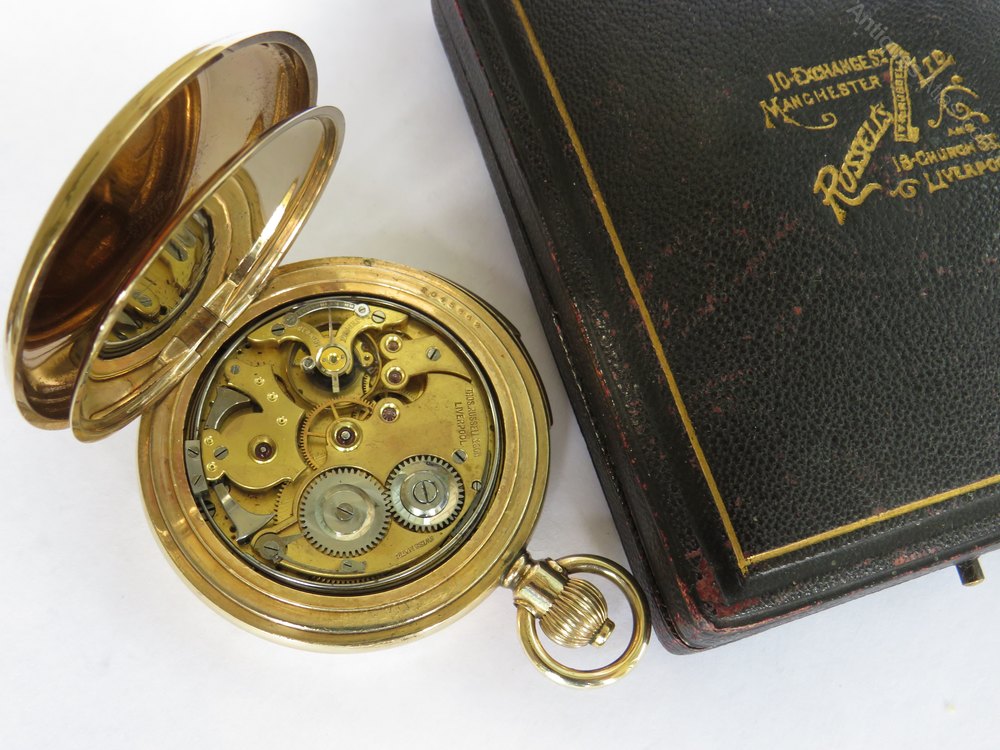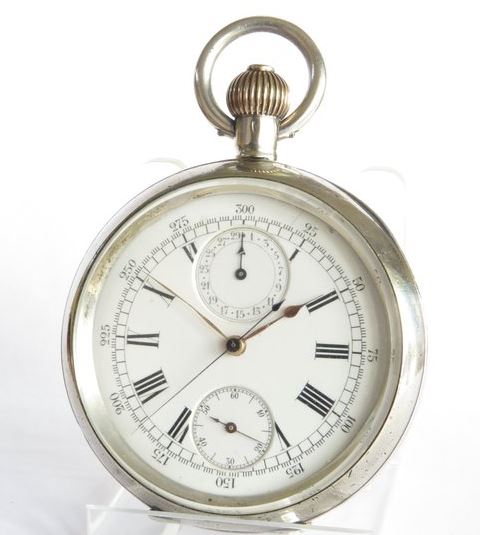Last updated on July 13, 2024
In the world of watches, a complication is any mechanical function of a timepiece that goes beyond the display of hours, minutes and seconds. A watch indicating only hours, minutes and seconds is known as a simple movement. My personal preference is for simplicity, all of the watches I have ever owned, modern or antique, have been limited to simple movements, or perhaps a day/date complication. The only exception is my G-Shock which has more functions than I could ever possibly use. For me, a watch simply tells the time and I have a smartphone in my pocket for anything more complicated. In this post, we take a look at some of the common antique watch complications.
Antique watches with complications are available, but are far rarer than those with simple movements and therefore far more expensive. I am deliberately excluding complicated watches from my collection for two reasons. First, as stated above, I have no genuine interest in modern complicated watches. And second, the more complicated the watch, the more expensive the inevitable servicing and repair costs. However, I decided for this post, to take a look at some of the complications available in antique pocket watches.
Chronograph
A chronograph is commonly known today as a stopwatch. This additional functionality makes it possible to measure or stop the time. A second hand can be started, stopped and reset by pressing one or more of the pushers. The function operates separately from the normal timekeeping of the watch. Chronographs often get confused with chronometers. The former is a watchmaking complication and the latter is a certified, very high-precision, timekeeping device
Repeater
A repeater is a complication in a mechanical watch that chimes the hours and often minutes at the press of a button. There are several types of repeater, from the simple version which strikes the hours, to the minute repeater which chimes the time down to the minute, using separate tones for hours, quarter hours, and minutes. Repeaters allowed the user of the watch to know the time in the dark, they were also useful for the visually impaired.

Calendar
The calendar complication displays the date, day and month, usually in sub-dials on the watch face. However, in some cases, the display was limited to just the date or date and day. The calendar function is updated once a day or could be manually adjusted, typically by wheels beneath the dial.
Alarm
The alarm complication allows the user to set a time for an audible alarm. Typically, the alarm could only be set on a twelve hourly basis.
Moon phase
A moon phase complication is one that tracks the 29.5-day lunar cycle by displaying the current moon phase in an aperture on the dial. A moon phase is a practical way of describing the illuminated, or visible, portion of the moon as it orbits the Earth.
Power reserve
The power reserve complication shows how long the tension of the mainspring will keep the watch running before it has to be rewound.
Tourbillon
A tourbillon is a mechanism that constantly rotates the balance and the escapement while the movement is running. This is done to counter the effect of Earth’s gravity on the movement. The tourbillon was invented by Breguet in 1795 and patented in 1801. Strictly speaking, it isn’t really a complication by the meaning of the term, as it doesn’t add an additional function to the timekeeping. However, it does improve timekeeping and is widely considered a complication.
Grand Complications
A Grand Complication is a term that was coined in the early twentieth century to describe a pocket watch that has multiple complications. However, there is no strict definition, but it is commonly accepted that a timepiece must have at least three complications; one from each of the timing, astronomical and striking complication groups.
Non-horological
By some definitions, a display on a watch may be a complication even if it is unrelated to timekeeping or watch functionality. Examples include thermometers, barometers, compasses and altimeters. However, not all collectors agree that these are genuine antique watch complications.
Related content
Watch complications at Wikipedia.

